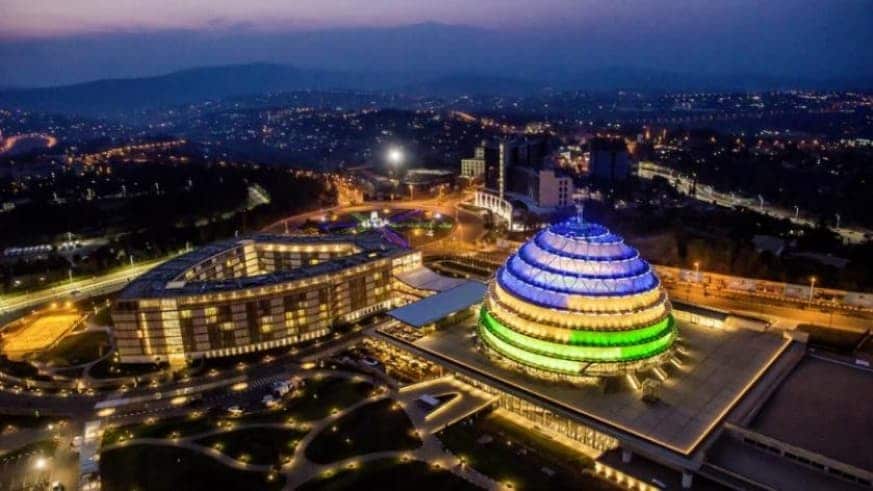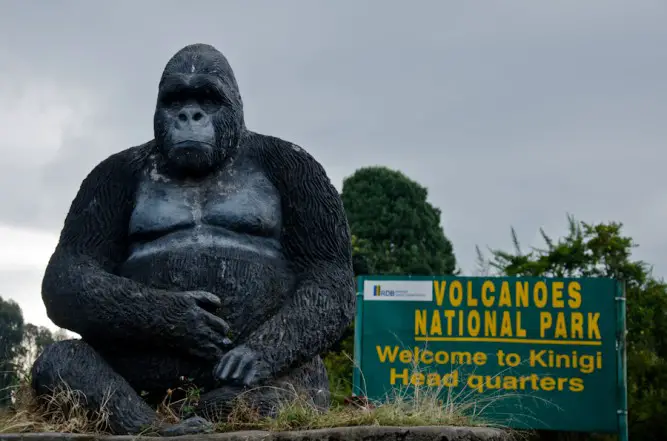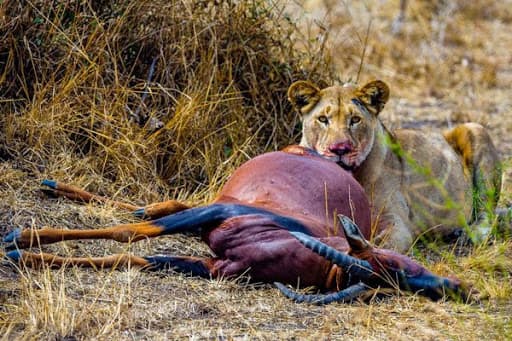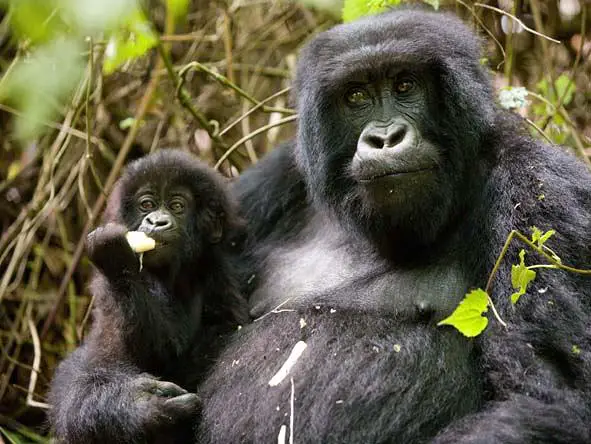RWANDA AT A GLANCE
Rwanda, formerly Ruanda, officially the Republic of Rwanda, Home of Gorillas is a landlocked country in the Great Rift Valley where the African Great Lakes region and East Africa converge. One of the smallest countries on the African mainland, its capital city is Kigali. The country has struggled with its legacy of ethnic tension associated with the traditionally unequal relationship between the Tutsi minority and the majority Hutus.
BEST TIME TO VISIT

If you’re researching when to go to Rwanda then the chances are that it’s for a gorilla trekking adventure. Although it’s regarded as a year-round activity, the best time to visit Rwanda for a gorilla trek is during the short dry season from mid-December to early February or over the long dry season months of June to September. These periods offer by far the easiest hiking conditions and the lowest malaria risk.
You can visit Rwanda and trek gorillas outside these optimum times of year but bear in mind that the going will be more difficult in the rain as paths are steep and may be muddy. It pays to be as fit as possible before you commence your trek.
The best time to go to Rwanda for chimpanzee trekking in Nyungwe, however, is during the two rainy seasons – mid-February to early June and mid-September to mid-December – as the apes are easier to locate. Food is harder to find in the dry seasons and the chimp families often range far into the forest interior. Advices Go2Africa
WHY TRAVEL TO RWANDA?
Africa’s easiest and most accessible gorilla trekking is the main drawcard of a Rwandan safari. After arriving at the capital city of Kigali, you are only a few hours’ drives away from the legendary Volcanoes National Park and its habituated but still wild gorilla families.
It was on the bamboo-covered slopes of Rwanda’s Virunga Volcanoes that the late Dian Fossey studied the behaviour of the endangered mountain gorilla for 20 years, followed by the filmmakers who shot Gorillas in the Mist. Now small groups of privileged visitors can experience one of the most memorable wildlife encounters on earth – gorilla trekking through the pristine Virungas rainforest.
Rarely experienced in isolation, a Rwandan gorilla safari combines well with other East African destinations in Uganda, Kenya or Tanzania but there is more to green and hilly Rwanda than meets the eye: it is also home to the primate-filled Nyungwe Forest National Park where there are chimpanzees and fantastic bird-watching opportunities. Akagera National Park, on the other hand, offers big game viewing in a diverse savannah setting.
Lake Kivu is a gorgeous expanse of water surrounded by Rwanda’s gently rolling slopes – in fact, Rwandans call their home ‘the country of a thousand hills’ because of its undulating landscape. Kivu is a great place to enjoy boating, hiking, kayaking and chimp trekking.
Small, compact and easy to travel around, friendly Rwanda has dealt with its past tragedies and offers intrepid travellers and wildlife enthusiasts what is usually a hard-to-gain insight into Central African cultures, wildlife and environments. Simply browse our range of popular tour itineraries and recommended accommodation or contact one of our African Safari Experts for assistance with planning a tailor-made Rwandan safari.
NATIONAL PARKS IN RWANDA
VOLCANO NATIONAL PARK

In the heart of Central Africa, so high up that you shiver more than you sweat,” wrote the eminent primatologist Dian Fossey, “are great, old volcanoes towering almost 15,000 feet, and nearly covered with rich, green rainforest – the Virunga’s.”
Situated in the far northwest of Rwanda, Volcanoes National Park protects the steep slopes of this magnificent mountain range – home of the endangered mountain gorilla and a rich mosaic of montane ecosystems, which embrace evergreen and bamboo forest, open grassland, swamp and heath.
Volcanoes National Park is named after the chain of dormant volcanoes making up the Virunga Massif: Karisimbi – the highest at 4,507m, Bisoke with its verdant crater lake, Sabinyo, Gahinga and Muhabura.
Tracking endangered mountain gorillas through the mysterious intimacy of the rain forest, alive with the calls of 200 species of colourful birds and chattering of the rare golden monkey, is only one of the truly unique experiences in the area.
Within the boundaries of Volcanoes National Park is Buhanga Eco-Park, an ancient forest holding Rwanda’s most intriguing folklore and Musanze Caves, formed 62 million years ago after the last estimated volcanic eruption.
AKANGERA NATIONAL PARK

The relatively warm and low-lying plains of Akagera comprise savannah, woodland, wetland and a dozen lakes. In partnership with African Parks, we aim to transform the National Park into a world-class location to experience a safari.
The largely open expanse is ideal for game viewing, and we are taking steps to ensure the Big Five roam the park in greater numbers over the course of time. Since 2010 we have cut poaching to an all-time low, with the introduction of a helicopter, a canine unit and rhino trackers.
A family of lions from South Africa is settling in well, and breeding successfully, and 18 eastern black rhinos have also been reintroduced.
NYUNGWI NATIONAL PARK

One of the oldest rainforests in Africa, Nyungwe is rich in biodiversity and spectacularly beautiful. The mountainous region is teaming with wildlife, including a small population of chimpanzees as well as 12 other species of primate, including the L’Hoest’s monkey endemic to the Albertine Rift.
With 15 trails, some of which are detailed here, along with various other activities, visitors can choose to sample the delights of the forest or indulge themselves for a week or more in one of Africa’s most stunning forests.
Primate tracking tops most visitor’s list, but it’s worth lingering a little longer for those with time to relax and take in the primal atmosphere.
What to pack
Waterproof hiking sturdy boots.
They will help you when Gorilla trekking in those slippery wet Mountains.
Sturdy gardening gloves
They will come in handy, in the bush when gorilla trekking especially when you slide, you can hold on to branches to back you up and avoid a nasty fall.
Rain Jacket
Mostly you will hike in the rain and this rain jacket comes in handy to avoid the unnecessary cold. If you are carrying one, carry a light one which you can easily fold and kip in your bag pack until you need it.
African Safari Hat
The scorching sun will burn mercilessly as much as you have sun scream creams you will need back up of a safari hat, they look beautiful on you, remember?
Insect Repellent
During the trek you come across different insects, therefore, wears a lot of insect repellent will protect you, also you can apply a sunblock cream on your exposed body parts.
For trackers who are on a Gorilla Habituation Experience, which takes a full day are advised to bring the repellent in their daypack.
Warm Sweater
Someone might wonder, a sweater in Africa? Yes, and it is important that you carry one or a cardigan to be worn in the early mornings and cool nights. It really gets so cold at night. In Mgahinga Gorilla Park or Volcanoes National Park, the temperature is at10°C/50°F and in Bwindi Impenetrable it’s at11°C/52°F and sometimes it’s lower than this.
What is the right colour for your safari clothes?
Bright colours should be avoided while carrying out safari activities in the jungle, but these can be used while enjoying dinner back at the lodge. Neutral colours like light brown, green, Khaki are good for safari activities during the day and they are highly recommended all over Africa, in Kenya, Tanzania, Uganda, Rwanda, South Africa, Botswana and so much more. Black and blue shirts are not good in the jungle since they attract tsetse flies and other insects.

